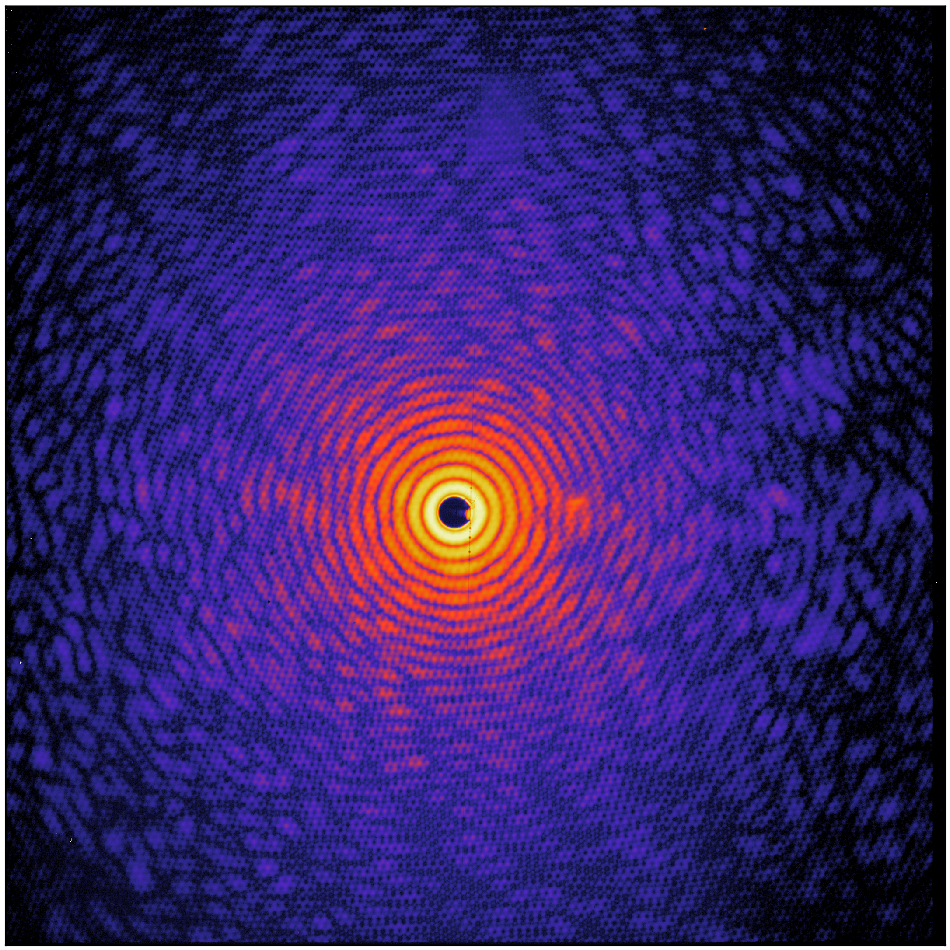Jun 25 2018
 X-ray hologram of VO2 during the phase transition. Image Credit: MBI.
X-ray hologram of VO2 during the phase transition. Image Credit: MBI.
Electronic devices work by controlling the flow of electrons inside circuits, and this is accomplished by using the right kind of materials.
The function of insulators is to prevent conduction, while that of metals is to enable the electrons to flow freely. Generally, a material’s electrical properties are determined when the material is developed and cannot be altered afterwards without modifying the material.
Yet, there are materials that display have both insulator and metal behavior based on their temperature. These materials are capable of switching their properties and hence they could result in a new generation of electronic devices.
One such material is vanadium dioxide (VO2). At just above room temperature, this material is able to change from an insulating phase to a metallic phase; a feature that has already been exploited for sensors. Conversely, for more than 50 years, there has been a serious scientific debate on why this material’s properties change so considerably.
A key challenge in understanding how and why this change takes place is attributed to a process referred to as phase separation. The transition from insulator to metal phase is similar to the transition of ice to liquid in water.
When ice melts, solid as well as liquid water can exist together in separate regions. In a similar way, in VO2, the material’s metallic and insulating regions can coexist simultaneously during the transition.
However, in the case of water, the different regions are usually sufficiently large to observe with the naked eye, while with regards to VO2 this separation takes place on the length-scale of nanometers and hence it is difficult to see. Therefore, it has been difficult to know whether the real properties of each phase, or the combination of both phases, are being determined.
While X-rays serve as an important tool to interpret the materials’ properties, they cannot be used easily to address this issue because this needs a nanometer spatial resolution combined with a spectroscopic sensitivity in order to differentiate the different phases in an image.
In a new study featured in Nano Letters, a research team from the Max Born Institute and the Technische Universität in Berlin, Vanderbilt University in Tennessee, and Institute for Photonic Sciences and ALBA in Barcelona has successfully used resonant soft X-ray holography to study the phase transitions that take place in thin VO2 films.
This imaging method can trace and image the structural and electronic changes that occur in this material with a spatial resolution of approximately 40 nanometers (i.e. 500.000 times smaller than a standard ice cube in a drink).
The researchers examined the tiny vanadium dioxide crystal platelets and discovered that defects in the material played a major role in triggering the transition from the insulator to the metal phase, but more significantly they noted a third intermediate state also formed during the phase transition.
Whilsy some regions directly changed from the insulating to metallic phase, others changed into another different insulating state prior to becoming metallic at more intense temperatures, with the precise pathway taken based on the defects existing in the material.
Therefore, the coexistences of three phases at the same time have dramatically changed the view based on earlier studies that assumed the presence of just two states during the transformation.
Going forward, the researchers want to apply ultra-short laser pulses to initiate the phase transition and see the dynamics of the transition.
As the material naturally wants to form this patchwork of different domains during the transition from insulator to metal, we need to observe how this process unfolds in time to understand and better control it in the future."
Prof. Stefan Eisebitt, The Max Born Institute
Critical to this effort are the unique potentials that X-ray holography brings to analyze the materials on the nanoscale. X-ray holography is one among the few techniques that exploit the ultra-short pulses and coherence of X-ray lasers such as the newly inaugurated European X-Ray Free Electron Laser (XFEL). This technique can actually image the dynamics of ultrafast processes, which take place within pico- and femtoseconds in a solid material.

Nano-patchwork of different domains forming at different temperatures (in degree Kelvin) during the phase transition, obtained by series of x-ray holograms.
In the image above, the different domains and defects in the VO2 crystallites are shown in false color to represent their different properties. red = defect region, black = insulating M1 phase, blue = newly observed insulating M2 phase, green = metallic R phase. The 500 nanometer scale bar amounts to about 1/100 of the diameter of a human hair.
We are really excited about the prospect of recording a movie of how the phase transition proceeds, reflecting the interplay of atomic nuclei and electrons in the different domains of a sample.
Beyond vanadium dioxide, this approach will help us to fundamentally understand the properties of many intriguing materials, including for example high temperature superconductors.”
Prof. Simon Wall, The Institute of Photonic Sciences, Barcelona.